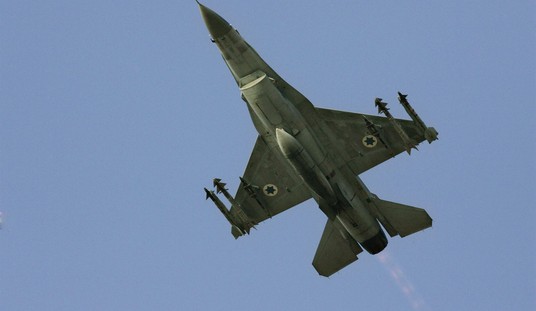A crisis hotline with Iran? Are mutual assured destruction and arms-control negotiation next?
An essential point of understanding is this: the problem with MAD in the Cold War was that it didn’t work on the Russians nearly as well as it worked on us. The Soviet Russians never wanted to shoot nuclear missiles at us. They just wanted to be able to hold us at risk so that our behavior would be constrained, and theirs could proceed on schedule. Most of the time, they achieved that goal (rare exceptions would include Nixon’s deterrence of Soviet intervention in the 1973 war).
The MAD regime inhibited the US, but did not inhibit the Soviets when it came to the things they really wanted to do: hold the Warsaw Pact nations under their boot, foment revolution, and arm Marxist insurgencies in third-party nations abroad. Indeed, MAD did the opposite: it gave cover to Soviet revolutionary adventurism.
So it is a terrible idea to implement a de facto Cold War-like regime with Iran. This is not solely because the Iranian leadership is uniquely committed to a lunatic policy of immanentizing the eschaton. That matters, but it’s not the most important downside to a MAD regime with Iran. The important weakness of the idea is something even likelier: that an institutionalized standoff with Iran would give Iran cover for an accelerated career of foreign troublemaking.
Iran doesn’t want to hunker down like a turtle within her borders. Revolutionary Iran wants the latitude to push outward across the region through Islamist insurgencies and “cultural jihad.” Tehran already sponsors Hezbollah, Hamas, the homicidal Assad regime in Syria, and the Houthi rebels in Yemen. Iran arms the Taliban and other Islamists fighting US and NATO forces in Afghanistan, and has a close, arms-and-supplies-based relationship with Shia Islamists in southern Iraq. Iran also backs elements of the Shia opposition in Bahrain (an especially problematic situation given that Shia Bahrainis have legitimate grievances against the minority Sunni ruling class). Prior to the Arab Spring, Iran was using cultural centers in Arab nations across the Middle East and North Africa for jihadist recruitment.
But the Iranian threat isn’t just in the Eastern hemisphere. Through the magic of foreign alliances, Tehran now has the prospect of using territory in Central America – Venezuela, perhaps eventually Nicaragua and Bolivia – for military purposes. This is a late-coming option, of course; Hezbollah has been in the Americas for years. But Iran has never been this close to being able to deploy medium-range ballistic missiles (in Venezuela) that can hit the Southeastern United States.
In such a situation, it would be exceptionally foolish for the US to institute a crisis hotline with Iran. Yet this is one of the options reportedly under consideration for addressing a recent series of dangerous incidents at sea in the Persian Gulf.
The incidents primarily involve the speedboats operated by the Islamic Revolutionary Guards Corps (IRGC); another set of incidents involves Iranian naval aircraft. In both cases, the swift-moving nature of the encounters makes a hotline linking higher headquarters irrelevant to the developments on-scene. A hotline in such cases would be used mainly to register complaints. Whether Iran took advantage of the medium or not, the prospect of the US developing a standard operating procedure for complaining to Iran has farce written all over it.
This is undoubtedly well understood by the Defense Department chain of command and the experienced diplomats at State. There is reason to hope that a hotline is not being seriously proposed to address fleeting incidents at sea. On the other hand, the WSJ article mentions some form of an “incidents at sea” agreement with Iran, like the INCSEA agreement concluded with the Soviet Union under Nixon. That is equally problematic, for one thing because the particulars of the US-USSR INCSEA agreement have little applicability to Iran and the Persian Gulf.
But the main reason it’s a bad idea to seek an INCSEA agreement is that a crucial element is missing in the situation with Iran: acceptance of US legitimacy in the region. Tehran would not approach negotiating an INCSEA as Soviet Moscow did, on the basis of two legitimate powers agreeing to a naval modus vivendi. Iran’s negotiating objective, under her current leadership, would be at a minimum the departure of the US Navy from the Gulf.
Details aside, proposals like a hotline or an INCSEA do one especially inadvisable thing: they open the door to legitimating and institutionalizing Iran’s posture of armed hostility. In striking the tocsin of the Cold War, they suggest a fatalistic, temporizing mode of thinking in the White House.
They also violate the first principle of the carrot-and-stick method: reward good behavior.
We can be glad that WSJ quotes an unnamed official as saying the question of setting up a hotline is “premature,” but it is disquietingly premature for anyone to even be thinking about one. Iran is no Soviet Union; revolutionary Iran can only become a partner in hotlines and INCSEA negotiations – and presumably, down the road, MAD – if the US prematurely treats her as if she has us checkmated.
Only the US can boost Iran to the trappings of Cold War-style superpower status. Iran can’t do it on her own. The last thing the US administration should be doing is talking about it.
J.E. Dyer’s articles have appeared at The Green Room, Commentary’s “contentions,” Patheos, The Weekly Standard online, and her own blog, The Optimistic Conservative.
This post was promoted from GreenRoom to HotAir.com.
To see the comments on the original post, look here.








Join the conversation as a VIP Member